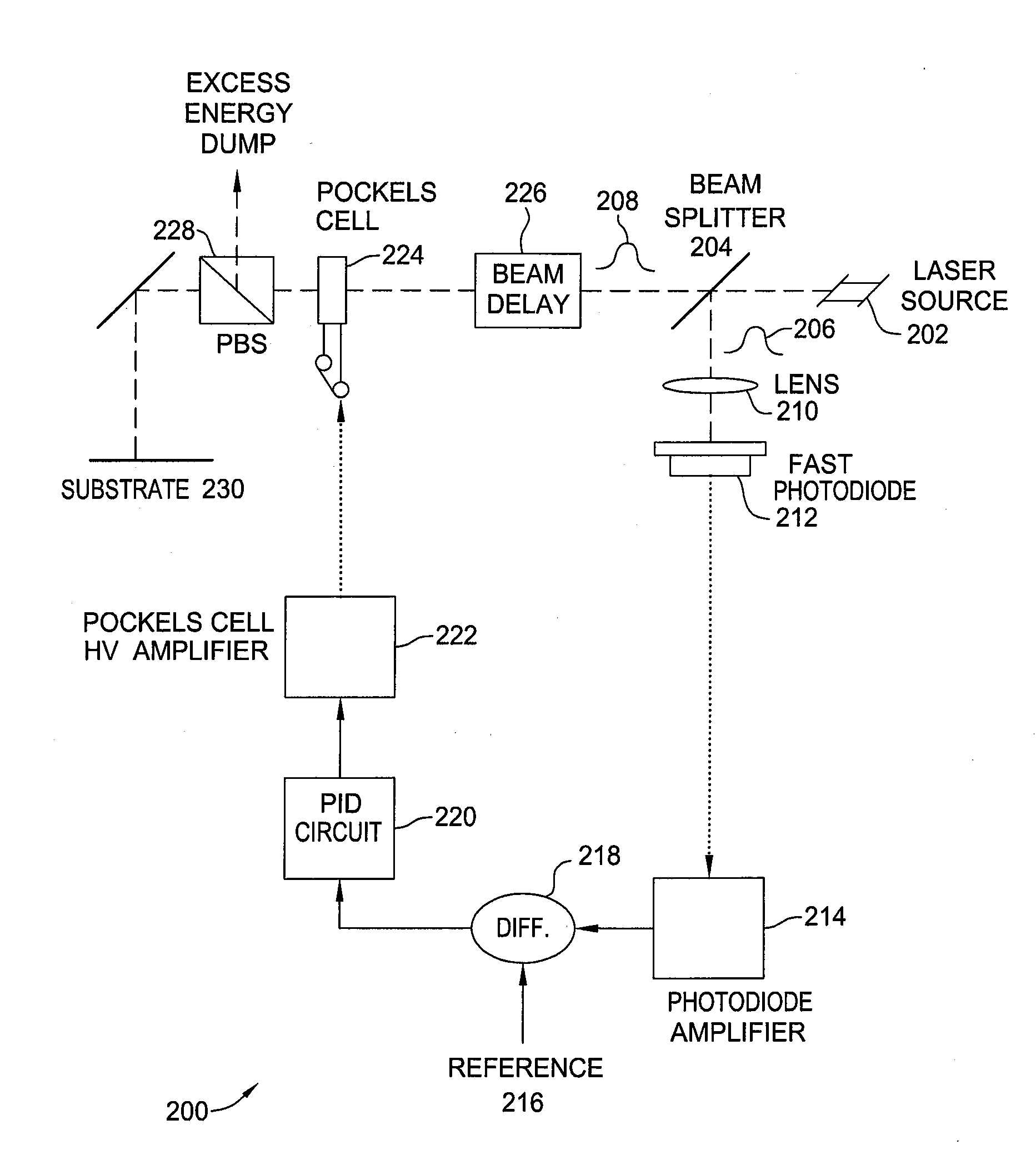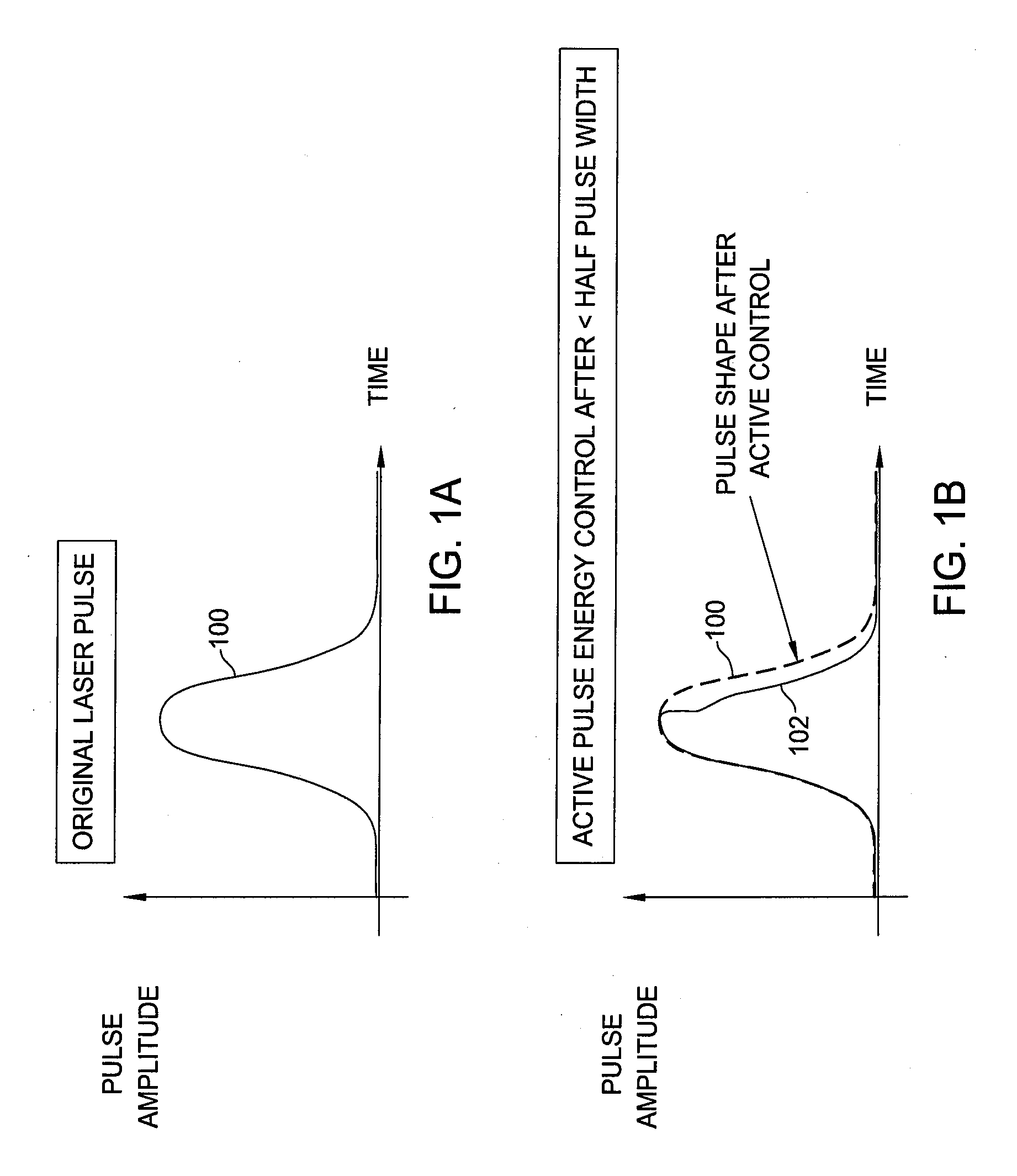Increased nanosecond laser pulse-to-pulse energy repeatability using active laser pulse energy control
a laser pulse and pulse energy control technology, applied in lasers, laser beam welding apparatus, manufacturing tools, etc., can solve the problems of limited heat dissipation into surrounding space or structures, heat cannot be easily dissipated, and the entire wafer is heated, so as to reduce the variation increase the repeatability of pulse-to-pulse laser energy
- Summary
- Abstract
- Description
- Claims
- Application Information
AI Technical Summary
Benefits of technology
Problems solved by technology
Method used
Image
Examples
Embodiment Construction
[0025]Embodiments of the present invention provide techniques and apparatus for reducing the pulse-to-pulse laser energy variation (i.e., increasing the pulse-to-pulse laser energy repeatability) from a pulsed laser source. In this manner, laser pulses impingent on a processing plane, such as the surface of a wafer or other substrate, may have substantially the same energy content leading to a more controlled annealing process when compared to conventional annealing. The technique may be based on in-situ detection of the pulse energy level and the subsequent active adjustment of the transmitted laser pulse energy in a closed-loop control scheme. Furthermore, the active adjustment of the energy in each laser pulse may occur within a few nanoseconds after the original laser pulse is generated by a pulsed laser source.
[0026]There may be a number of ways to actively control the energy content of a transmitted laser pulse. FIG. 1A illustrates an exemplary, Gaussian laser pulse 100 origin...
PUM
| Property | Measurement | Unit |
|---|---|---|
| frequency | aaaaa | aaaaa |
| wavelength | aaaaa | aaaaa |
| wavelength | aaaaa | aaaaa |
Abstract
Description
Claims
Application Information
 Login to View More
Login to View More - R&D
- Intellectual Property
- Life Sciences
- Materials
- Tech Scout
- Unparalleled Data Quality
- Higher Quality Content
- 60% Fewer Hallucinations
Browse by: Latest US Patents, China's latest patents, Technical Efficacy Thesaurus, Application Domain, Technology Topic, Popular Technical Reports.
© 2025 PatSnap. All rights reserved.Legal|Privacy policy|Modern Slavery Act Transparency Statement|Sitemap|About US| Contact US: help@patsnap.com



